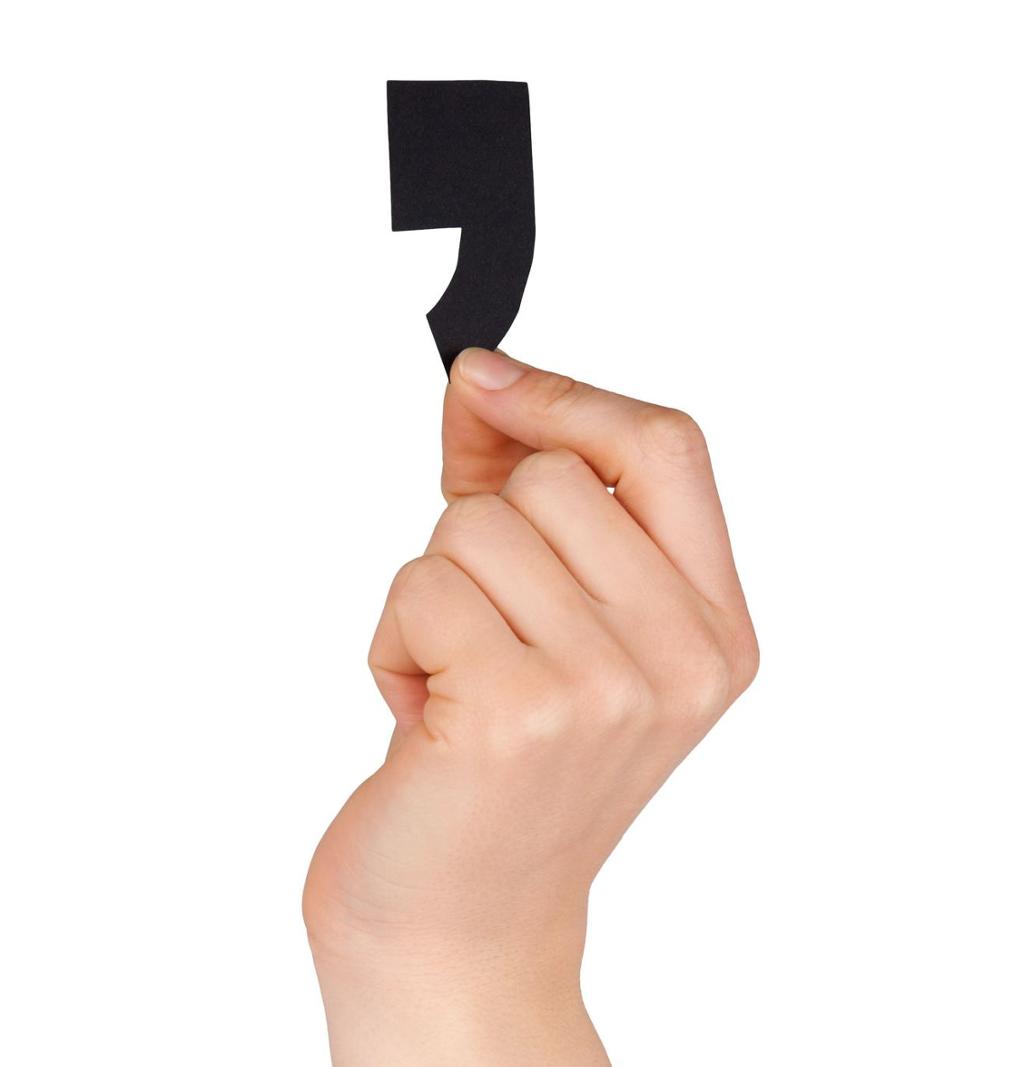Comma Rules in English

A comma helps the reader by inserting a breathing space into a sentence, making it easier to read. The comma is a valuable punctuation device, because it separates the structural elements of sentences into manageable segments and helps the reader to more easily understand the meaning. However, they can often be difficult to place, and getting it wrong – or omitting them completely –can often lead to misunderstandings and sometimes hilarious sentences, as seen in the sentence below.
I find inspiration in cooking my family and my dog.
I find inspiration in cooking, my family, and my dog.
Here are some of the comma rules that often create trouble for Norwegian students:
Use commas to separate two independent clauses when they are joined by a coordinating conjunction (and, but, for, or, nor, so, yet).
Example:- The fence needs to be repainted, and I will take care of it soon.
Use a comma after introductory phrases. These introductory elements can include single words, short prepositional phrases, or longer dependent clauses.
Example:
The introductory phrases have been marked in bold.
- While I was watching TV, my brother made dinner.
- Since I have an exam tomorrow, I think I will stay at home tonight.
- However, you may not like what I’m about to say.
Use commas to separate items in a list.
Example:I ate steak, corn and mashed potatoes.
orI ate steak, corn, and mashed potatoes.
The comma in the second sentence before 'and' at the end of the list is optional, but it is never wrong to include it. This is referred to as an Oxford comma.
Use commas to set off non-essential elements in a sentence. By non-essential elements we mean extra information that could be removed without altering the meaning of a sentence.
Example:
The non-essential information has been marked in bold.Some people, as you know, simply can’t help making fools of themselves.
Her car, a yellow Jaguar, looks fantastic.
Use a comma between coordinate adjectives that are modifying the same noun. Coordinate adjectives are adjectives that can be joined by the conjunction 'and'.
Example:Mary is a funny, creative girl
(Mary is a funny and creative girl).
If you can’t join the adjectives with 'and', you would not use a comma. These adjectives are called cumulative adjectives.
Example:Two yellow cars were driving past my house.
(You would not say 'Two and yellow cars …')
You can read more about coordinate and cumulative adjectives by following this link:
Link to the NDLA article 'The Order of Adjectives'Use a comma to separate a quotation from the rest of the discourse.
Example:- 'I didn’t have enough time,' she said, 'to complete my essay.'
- Phillip laughed and said, 'Let’s meet again next week.'
Use a comma to set off items in dates, addresses, geographical names, and titles in names.
Example:- What happened on 6 December, 2004?
- The American president lives at 1600 Pennsylvania Avenue, Washington, DC.
- Ann Laker, MD, works at the National Institute of Allergies and Infectious Diseases.